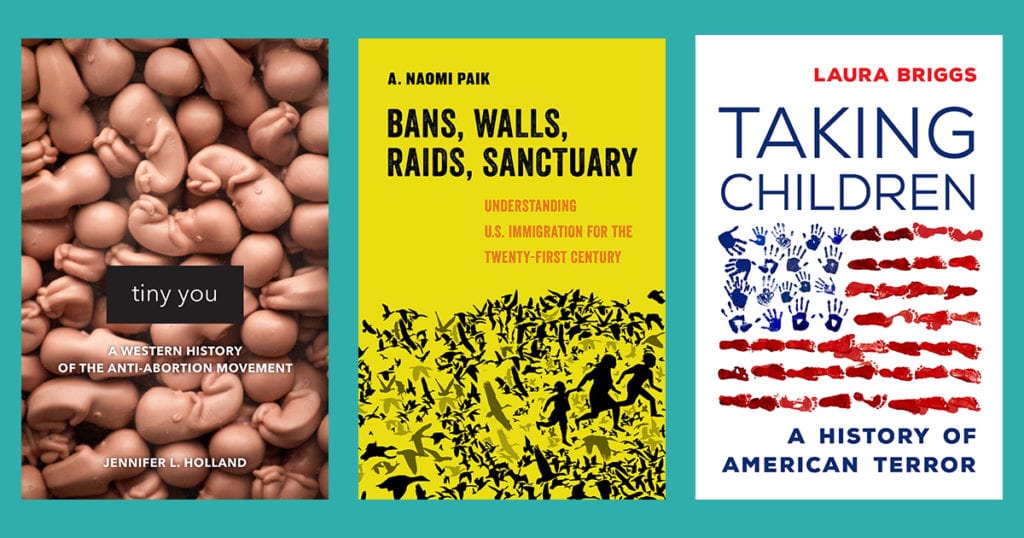
We are thrilled to be publishing a number of new titles groundbreaking books in Western History. Tiny You: A Western History of the Anti-Abortion Movement by Jennifer L. Holland tells the story of one of the most successful political movements of the twentieth century: the grassroots campaign against legalized abortion.
Bans, Walls, Raids, Sanctuary by A. Naomi Paik is an essential primer that shows how barriers to immigration are embedded in the very foundation of the United States. Watch a Q&A with Paik where she discusses the dark historical truths at the root of U.S. immigration policy, and how embracing an abolitionist sanctuary movement for all has the power to challenge state violence and overturn interlocking systems of oppression.
In Taking Children: A History of American Terror, Laura Briggs argues that for four hundred years the United States has taken children for political ends. Black children, Native children, Latinx children, and the children of the poor have all been seized from their kin and caregivers.
Shana Klein’s The Fruits of Empire: Art, Food, and the Politics of Race in the Age of American Expansion demonstrates how representations of fruit struck the nerve of the nation’s most heated debates over land, race, and citizenship in the age of high imperialism.
Environmental Justice in a Moment of Danger by Julie Sze examines mobilizations and movements, from protests at Standing Rock to activism in Puerto Rico in the wake of Hurricane Maria, and how environmental justice movements fight, survive, love, and create in the face of violence that challenges the conditions of life itself. Sarah Jaquette Ray’s A Field Guide to Climate Anxiety: How to Keep Your Cool on a Warming Planet is Gen Z’s first “existential toolkit” for combating eco-guilt and burnout while advocating for climate justice.
A People’s Guide to the San Francisco Bay Area by Rachel Brahinsky and Alexander Tarr Counters romanticized commercial narratives about the Bay Area and highlights the cultural and economic landscape of indigenous resistance to colonial rule, radical interracial and cross-class organizing against housing discrimination and police violence, young people demanding economically and ecologically sustainable futures, and the often-unrecognized labor of farmworkers and everyday people.
America’s Largest Classroom: What We Learn from Our National Parks edited by Jessica L. Thompson, Ana K. Houseal, and Abigail M. Cook offers insight and practical advice for improving educational outreach at national parks as well as suggestions for classroom educators on how to meaningfully incorporate parks into their curricula.
Vision and Place: John Wesley Powell and Reimagining the Colorado River Basin edited by Jason Robison, Daniel McCool, Thomas Minckley revisits Powell’s vision, examining its historical character and its relative influence on the Colorado River Basin’s cultural and physical landscape in modern times. In three parts, the volume unpacks Powell’s ideas on water, public lands, and Native Americans—ideas at once innovative, complex, and contradictory.